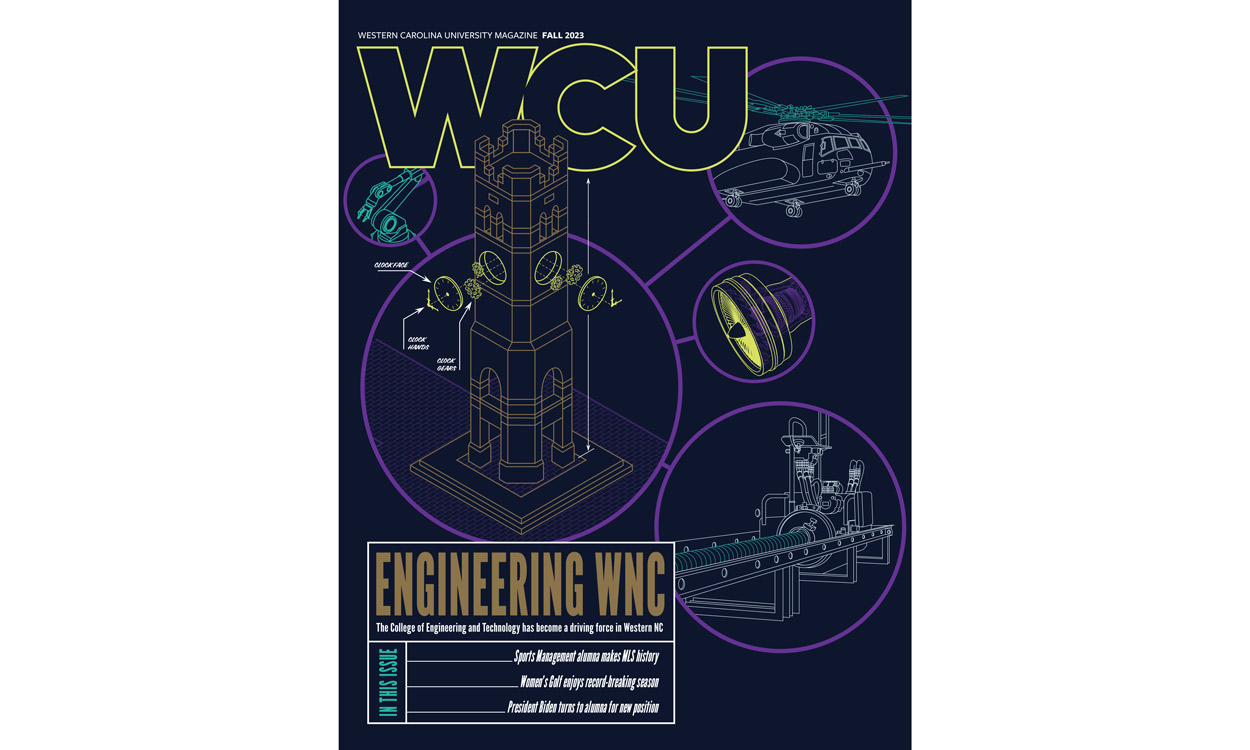WCU microplastics study sheds light on huge pollution problem
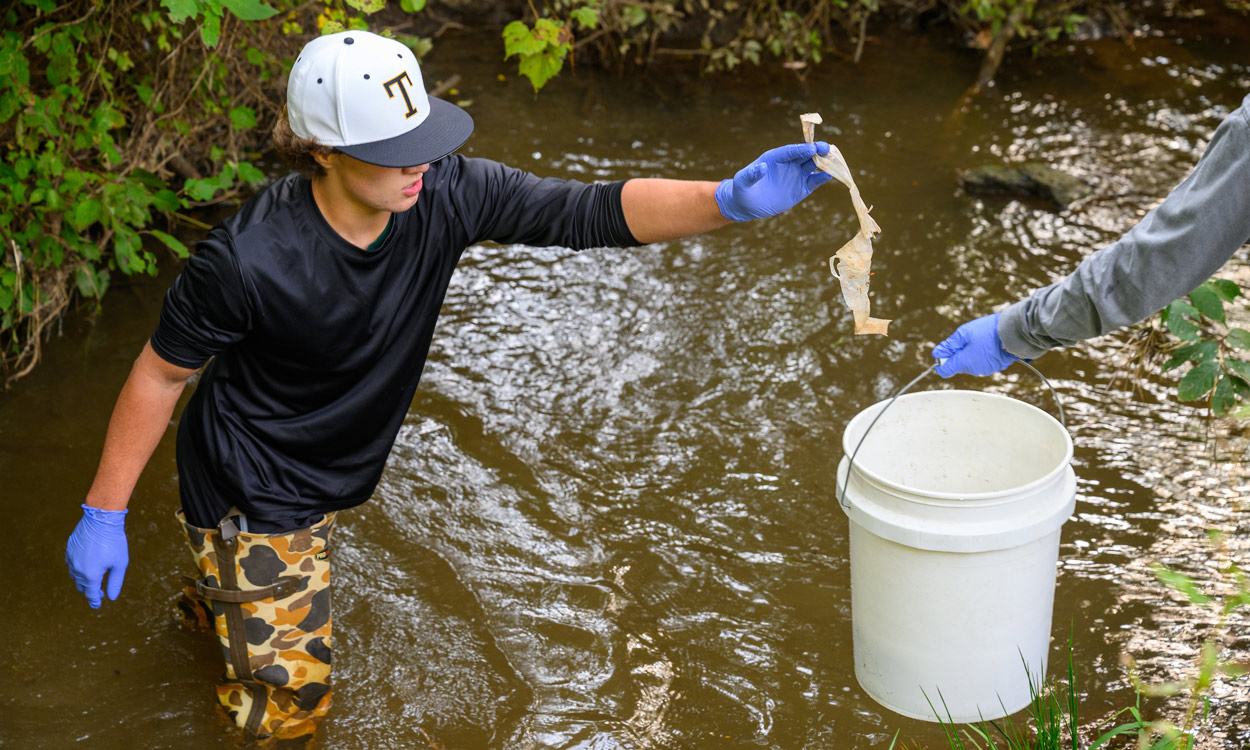
Tuscola High School student August Fama helps college plastics from Waynesville's Richland Creek watershed.
By Julia Duvall
A few years ago, Jerry Miller, professor in Western Carolina University’s Department of Geosciences and Natural Resources, began looking at microplastics and its effects on rivers and streams in Western North Carolina.
That was only the beginning.
“Through a grant from the provost’s office, we were able to set up a laboratory to analyze water samples for microplastics,” Miller said. “We also did preliminary work to develop methods to analyze these samples. During the COVID-19 pandemic, we were working on these methods and getting our messaging ready to share.”
During the initial phase of Miller’s project, Jason Love, associate director of WCU’s Highlands Biological Station, was also studying microplastics, but in freshwater mussels.
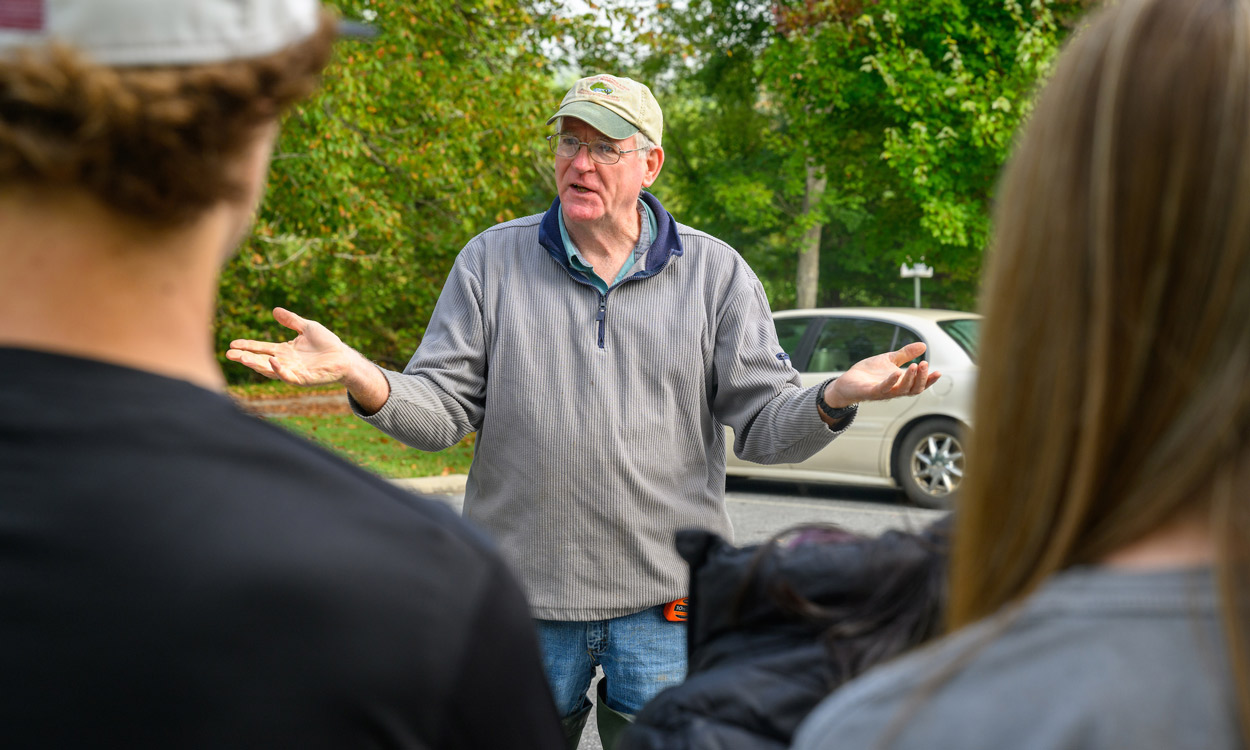
Jerry Miller, professor in the Department of Geosciences and Natural Resources
“After the pandemic restrictions were lifted, we teamed up on this project and together led a group of undergraduate students who were enrolled in a capstone research course through UNC-Chapel Hill to assess concentrations of these microplastics in the headwaters of the Chattooga River during a storm events,” Miller said. “We also worked with Haywood Waterways and Tuscola High School to submit a grant proposal to the Community Collaborative Research Program to get funding to start really looking at microplastics in our waterways.”
The project is funded by the NC Sea Grant and the NC Water Resources Research Institute.
This grant-funded project is a collaborative effort involving Miller, Love, Robert Youker, professor in WCU’s biology department, Sue Miller from Tuscola High School and Christine O’Brien from Haywood Waterways Association.
“The two main aspects to the study are to first of all, try to just figure out the concentration of microplastics in the water and secondly, working with Christine and Sue and her students to pick up trash along certain sections of the stream channels in Waynesville’s Richland Creek watershed,” Miller said.
After the trash was collected, the group separated the plastic and took it back to the labs, dried and identified the pieces and characterized the plastics by size and type.
Love and his UNC-Chapel Hill capstone students collected similar data on two small streams in the Cullasaja River basin in Highlands.
“Microplastics are defined as particles less than five millimeters in size, so they are pretty small,” Miller said. “One of the reasons we look at the large stuff is because the general assumption is that it breaks down into the little particles, which has the largest ecological impacts in most cases.”
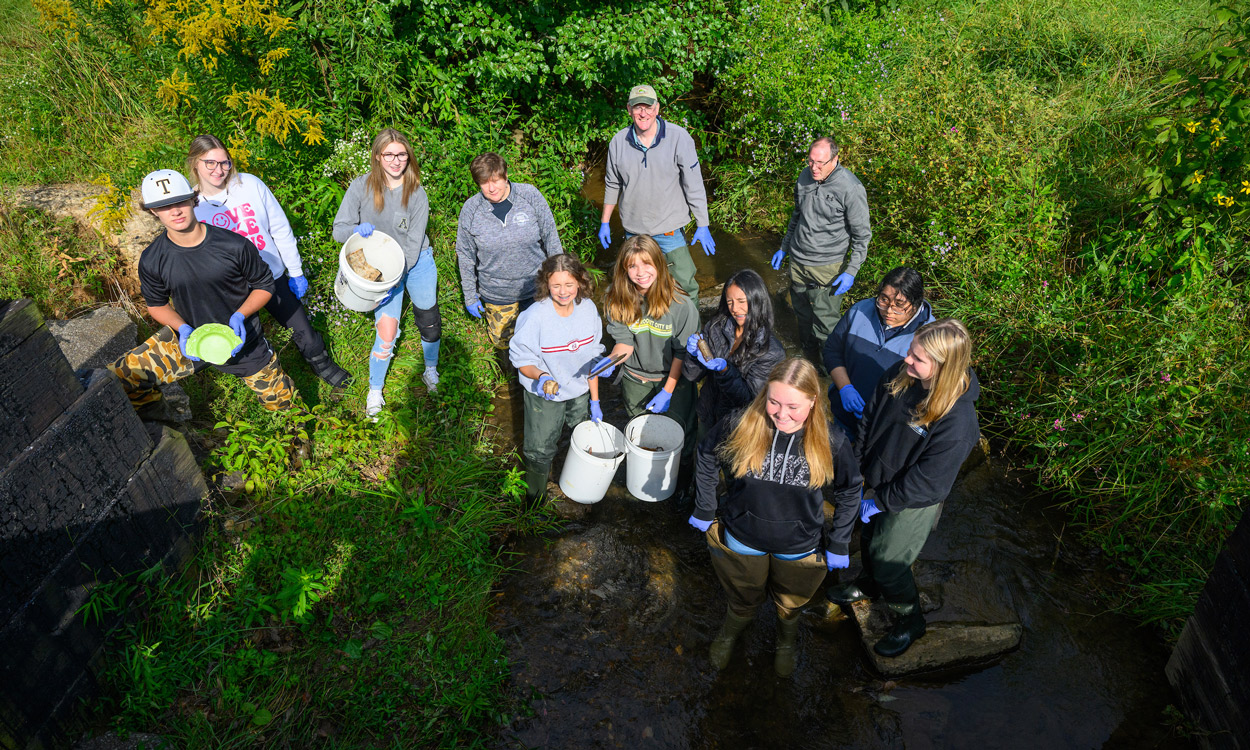
Back Row, Left to Right: Gracie Franklin, Kallie Francis, Sue Miller, Jerry Miller, Robert Naegly. Middle Row, Left to Right: August Fama, Harper Ramsey, Mya Downs, Natalie Jimenez Resendiz, Daisy Salazar Palomares, Charlotte Smith. Front Row: Maggie Ray.
During the trash pickup part of the study, Tuscola students and other volunteers picked up more than 1,500 pieces of trash along seven, 50 meter reaches of Richland Creek. This equates to about two pieces of plastic debris for every linear meter of stream channel.
“About 30% of what they picked up was plastic grocery bags,” Miller said. “Significant amounts of clothing, food wrappers and Styrofoam cups were found along with some rubber hoses and tires.”
While the study of microplastics and plastic pollution in oceanic and coastal environments dates back to the 1970s, it was not until 2011 that data began to be collected on rivers, lakes and other freshwater systems in North America.
“Of the studies that have been done, most were on very large rivers and the downstream portions of the rivers where there's been a lot of development,” Miller said. “Our study is unique in that it's looking at small headwater basins, so it is different from that perspective and these basins are important because around 70-80% of all plastics in the oceans come from rivers.”
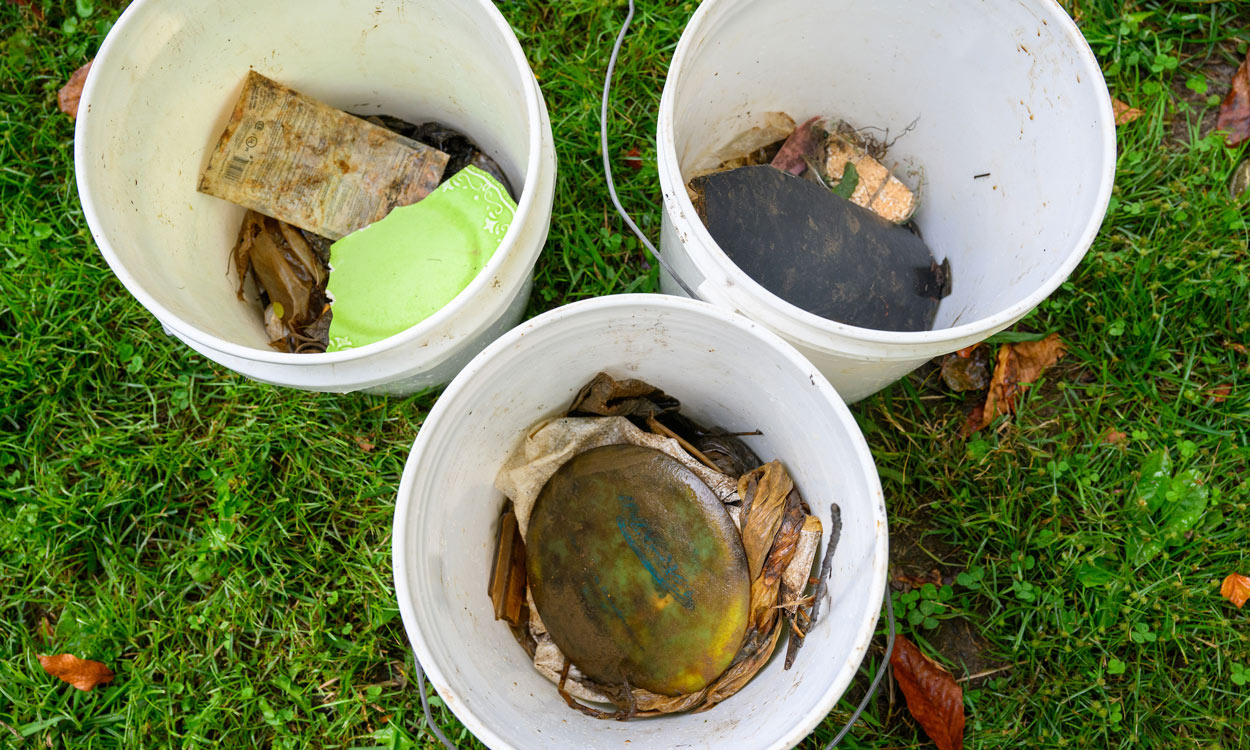
Another alarming discovery is that a large percentage of microplastics seen in the waters tested were from atmospheric deposition.
“We have one site in Waynesville that is almost all forest service restricted access with very little human activity,” Miller said. “We detected some of the highest microplastic concentrations up in that area falling out of the atmosphere and its mostly fibers. About 90% are small fibers most likely from clothing, tires, city wear and tear, and of course dust.”
In addition to the community organizations, and the students enrolled in the capstone course at Highlands Biological Station, Miller said several WCU students have also been involved over the past few years.
“We recently had two WCU students do a poster presentation on some of our findings at the Southeastern Geological Society of America meeting last year in Reston, Virginia,” Miller said. “Between the community, high school and WCU involvement, I hope we can continue this research for years to come.”

